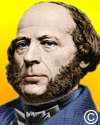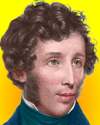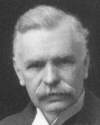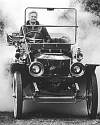Newsletter - July 31 - Today in Science History  | TODAY IN SCIENCE HISTORY
NEWSLETTER - 31 JULY |
 Today, a double feature - two famous people. On 31 July, within a few years of each other, two significant individuals were born: inventive Swedish-American naval engineer, John Ericsson (1803) and German chemist, Friedrich Wöhler (1800). Today, a double feature - two famous people. On 31 July, within a few years of each other, two significant individuals were born: inventive Swedish-American naval engineer, John Ericsson (1803) and German chemist, Friedrich Wöhler (1800).
Ericsson was the inventor of the screw propeller, and built the first armoured turret warship, the venerated USS Monitor. As with many other inventors, there is more to know of what he accomplished during his life, and you can read more in a not-too-long biographical piece from A History of American Manufactures (1866).
 Friedrich Wöhler co-discovered an element, but is best known for his landmark accomplishment as the first chemist to create an organic compound from purely inorganic substances. Thus he united two disciplines formerly regarded as totally independant. This “Biographical Sketch of Frederick Wöhler” from The Popular Science Monthly (1880) will not only give you a comprehensive insight into his life and career, but should also impress you with the appetite of nineteenth century popular magazine readers for substantial science content. Friedrich Wöhler co-discovered an element, but is best known for his landmark accomplishment as the first chemist to create an organic compound from purely inorganic substances. Thus he united two disciplines formerly regarded as totally independant. This “Biographical Sketch of Frederick Wöhler” from The Popular Science Monthly (1880) will not only give you a comprehensive insight into his life and career, but should also impress you with the appetite of nineteenth century popular magazine readers for substantial science content.
|
 On 31 Jul 1919, Primo Levi was born, an Italian novelist, short-story writer and poet. Primo Levi was also a chemist most of his professional life. As a memoirist, he is noted for his restrained and moving autobiographical account of and reflections on survival in the Nazi concentration camps. Today's Science Store pick is his most famous book: The Periodic Table. In it, Primo Levi uses the elements as metaphors to create a cycle of linked, somewhat autobiographical tales, including stories of the Piedmontese Jewish community he came from, and of his response to the Holocaust. With 4.5 out of 5 stars from over 50 reviewers, if you do nothing more than read their comments on the Amazon site, this book is well worthy of your attention. Your Webmaster has read and recommends it as an exquisite diversion from chemistry into profound stories from an all-to-real life. On 31 Jul 1919, Primo Levi was born, an Italian novelist, short-story writer and poet. Primo Levi was also a chemist most of his professional life. As a memoirist, he is noted for his restrained and moving autobiographical account of and reflections on survival in the Nazi concentration camps. Today's Science Store pick is his most famous book: The Periodic Table. In it, Primo Levi uses the elements as metaphors to create a cycle of linked, somewhat autobiographical tales, including stories of the Piedmontese Jewish community he came from, and of his response to the Holocaust. With 4.5 out of 5 stars from over 50 reviewers, if you do nothing more than read their comments on the Amazon site, this book is well worthy of your attention. Your Webmaster has read and recommends it as an exquisite diversion from chemistry into profound stories from an all-to-real life.
Price New from $12.50. Also available Used from $0.84 (as of time of writing).
For picks from earlier newsletters, see the Today in Science Science Store home page. | |

| "No research will answer all queries that the future may raise. It is wiser to praise the work for what it has accomplished and then to formulate the problems still to be solved."
(Theobald also has several more pithy quotes, so be sure to click his Quotes icon below too.)
- Theobald Smith, American pathologist (born 31 Jul 1859)  |
 | "Just as the spectroscope opened up a new astronomy by enabling the astronomer to determine some of the constituents of which distant stars are composed, so the seismograph, recording the unfelt motion of distant earthquakes, enables us to see into the earth and determine its nature with as great a certainty, up to a certain point, as if we could drive a tunnel through it and take samples of the matter passed through." - Richard Dixon Oldham, Irish geologist and seismologist (born 31 Jul 1858)  |
| "I picture the vast realm of the sciences as an immense landscape scattered with patches of dark and light. The goal towards which we must work is either to extend the boundaries of the patches of light, or to increase their number. One of these tasks falls to the creative genius; the other requires a sort of sagacity combined with perfectionism."
- Denis Diderot, French encyclopedist (died 31 Jul 1784)  |
| Before you look at today's web page, see if you can answer some of these questions about the events that happened on this day. Some of the names are very familiar. Others will likely stump you. Tickle your curiosity with these questions, then check your answers on today's web page. |

|  Theobald Smith, born 31 Jul 1859, was an American microbiologist and pathologist who discovered the causes of several infectious and parasitic diseases. He is often considered the greatest American bacteriologist. In 1892 he linked Texas cattle fever with a protozoan parasite spread by blood-sucking arthropods. At the time, many scientists were skeptical that disease would be spread by bloodsucking insects. However, the precedent was established for other scientists to make links in cases of other diseases spread by insects. Theobald Smith, born 31 Jul 1859, was an American microbiologist and pathologist who discovered the causes of several infectious and parasitic diseases. He is often considered the greatest American bacteriologist. In 1892 he linked Texas cattle fever with a protozoan parasite spread by blood-sucking arthropods. At the time, many scientists were skeptical that disease would be spread by bloodsucking insects. However, the precedent was established for other scientists to make links in cases of other diseases spread by insects.
 Which insect did Smith identify in the spread of Texas Cattle Fever? |

|  Friedrich Wöhler, born 31 Jul 1800, was a German chemist who co-discovered a new element. Having studied first medicine, then mineralogy, it was chemistry that became his primary interest. He found a method in 1827 for the production of metallic aluminum in the form of a grey powder by heating aluminum chloride with potassium. In 1828, he succeeded in the isolation of beryllium as a black-grey powder as well as of yttrium and (1856) crystalline silicon. His is most well-known for the synthesis of urea from ammonium cyanate (1828), which created an organic compound from an inorganic one, showing there was no absolute distinction between the two areas of chemical study. In 1862, he produced acetylene from calcium carbide. Friedrich Wöhler, born 31 Jul 1800, was a German chemist who co-discovered a new element. Having studied first medicine, then mineralogy, it was chemistry that became his primary interest. He found a method in 1827 for the production of metallic aluminum in the form of a grey powder by heating aluminum chloride with potassium. In 1828, he succeeded in the isolation of beryllium as a black-grey powder as well as of yttrium and (1856) crystalline silicon. His is most well-known for the synthesis of urea from ammonium cyanate (1828), which created an organic compound from an inorganic one, showing there was no absolute distinction between the two areas of chemical study. In 1862, he produced acetylene from calcium carbide.
 Not named above, can you identify the new element he co-discovered? |
 |  Francis Edgar Stanley (1849-1918) was an American inventor, who with his twin brother Freeman, were famous manufacturers of automobiles. Francis previously had invented a photographic dry-plate process (1883), and as the Stanley Dry Plate Company the brothers had engaged in the manufacturing of the plates. They sold the company to Eastman Kodak in 1905, as their interest had turned to automobiles. At racing events, they often competed successfully against gasoline powered cars. Francis Edgar Stanley (1849-1918) was an American inventor, who with his twin brother Freeman, were famous manufacturers of automobiles. Francis previously had invented a photographic dry-plate process (1883), and as the Stanley Dry Plate Company the brothers had engaged in the manufacturing of the plates. They sold the company to Eastman Kodak in 1905, as their interest had turned to automobiles. At racing events, they often competed successfully against gasoline powered cars.
 What powered Stanley cars? What powered Stanley cars? |
 |  On 31 July 1790, the first U.S. patent was granted to Samuel Hopkins of Vermont for a process for making potash and pearl ashes. Potash was used as an ingredient in soap and fertilizer. The patent was granted for a term of 14 years and signed by George Washington. On 31 July 1790, the first U.S. patent was granted to Samuel Hopkins of Vermont for a process for making potash and pearl ashes. Potash was used as an ingredient in soap and fertilizer. The patent was granted for a term of 14 years and signed by George Washington.
 What patent number was on this patent? |
When you have your answers ready to all the questions above, you'll find all the information to check them, and more, on the July 31 web page of Today in Science History. Or, try this link first for just the brief answers.
Fast answers for the previous newsletter for July 30: haemin; lead; John Dalton; insulin; the decade including the year 1888; Atlantic Ocean.
|
 If you enjoy this newsletter, the website, or wish to offer encouragement or ideas, please send feedback by using your mail reader Reply button. If you enjoy this newsletter, the website, or wish to offer encouragement or ideas, please send feedback by using your mail reader Reply button. |
--
If you do not want to receive any more newsletters,
this linkTo update your preferences and to unsubscribe visit
this link 
! !







 Theobald Smith, born 31 Jul 1859, was an American microbiologist and pathologist who discovered the causes of several infectious and parasitic diseases. He is often considered the greatest American bacteriologist. In 1892 he linked Texas cattle fever with a protozoan parasite spread by blood-sucking arthropods. At the time, many scientists were skeptical that disease would be spread by bloodsucking insects. However, the precedent was established for other scientists to make links in cases of other diseases spread by insects.
Theobald Smith, born 31 Jul 1859, was an American microbiologist and pathologist who discovered the causes of several infectious and parasitic diseases. He is often considered the greatest American bacteriologist. In 1892 he linked Texas cattle fever with a protozoan parasite spread by blood-sucking arthropods. At the time, many scientists were skeptical that disease would be spread by bloodsucking insects. However, the precedent was established for other scientists to make links in cases of other diseases spread by insects. Which insect did Smith identify in the spread of Texas Cattle Fever?
Which insect did Smith identify in the spread of Texas Cattle Fever?
 Francis Edgar Stanley (1849-1918) was an American inventor, who with his twin brother Freeman, were famous manufacturers of automobiles. Francis previously had invented a photographic dry-plate process (1883), and as the Stanley Dry Plate Company the brothers had engaged in the manufacturing of the plates. They sold the company to Eastman Kodak in 1905, as their interest had turned to automobiles. At racing events, they often competed successfully against gasoline powered cars.
Francis Edgar Stanley (1849-1918) was an American inventor, who with his twin brother Freeman, were famous manufacturers of automobiles. Francis previously had invented a photographic dry-plate process (1883), and as the Stanley Dry Plate Company the brothers had engaged in the manufacturing of the plates. They sold the company to Eastman Kodak in 1905, as their interest had turned to automobiles. At racing events, they often competed successfully against gasoline powered cars. 
 On 31 July 1790, the first U.S. patent was granted to Samuel Hopkins of Vermont for a process for making potash and pearl ashes. Potash was used as an ingredient in soap and fertilizer. The patent was granted for a term of 14 years and signed by George Washington.
On 31 July 1790, the first U.S. patent was granted to Samuel Hopkins of Vermont for a process for making potash and pearl ashes. Potash was used as an ingredient in soap and fertilizer. The patent was granted for a term of 14 years and signed by George Washington. If you enjoy this newsletter, the website, or wish to offer encouragement or ideas, please
If you enjoy this newsletter, the website, or wish to offer encouragement or ideas, please 
